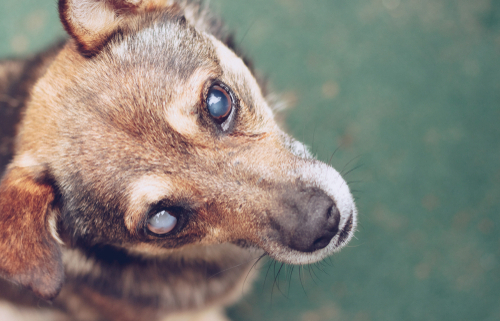Dog Blindness
There are many obstacles and situations to consider when dealing with dogs who are blind. For example, blind dogs can unknowingly fall down the stairs, jet in front of a car, or run into sharp objects. Do you think your dog is having problems seeing? Please make an appointment with your veterinarian so they can evaluate. There are so many reasons for blindness in dogs and you may not be able to tell that a loss of vision is happening.
Signs and symptoms vary depending on the cause of the blindness. Some of the signs your dog is having vision trouble include:
- General clumsiness
- Confusion
- Depression
- Unable to find water, food, or toys
- Excessive thirst
- Enlarged pupils
- Not wanting to go outside
Some of the most common causes of blindness in dogs include:
- Glaucoma – Increased pressure of the fluids in the eye that damages the optic nerve and retina
- Cataracts – Painless cloudiness of the eye lens that produces partial or complete blindness
- Diabetes – One in 10 dogs is diabetic and end up blind
- Progressive Retinal Atrophy (PRA) – An inherited disorder that causes retinal deterioration
- Old age
- Infection
- Injury
- Breed-specific
As we mentioned above, you will need to seek veterinary care if you feel that your dog is going through blindness. Your veterinarian will need to complete a physical and a series of diagnostic tests which will likely rule out underlying diseases such as diabetes and Cushing’s disease. In extreme cases, you may need to take your dog to a veterinary ophthalmologist for further testing.
Treatment depends on the case of the blindness. Despite the diagnosis, a blind dog’s quality of life can still be happy and positive. Encouragement and reinforcement on your part during walks and while training your dog to adapt can make a huge impact to your pet’s well-being.



